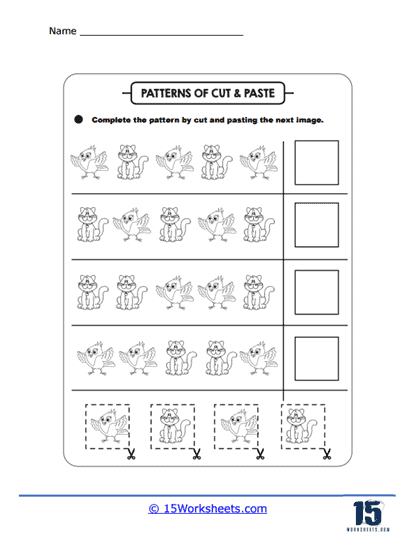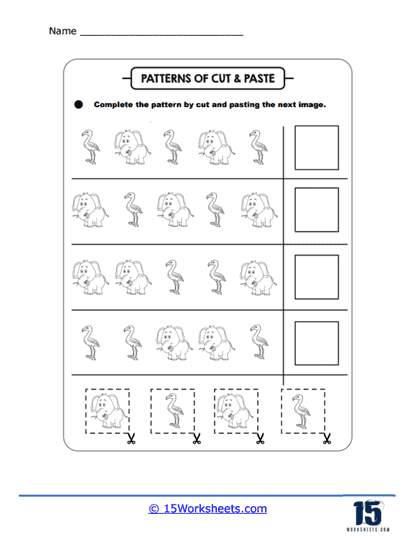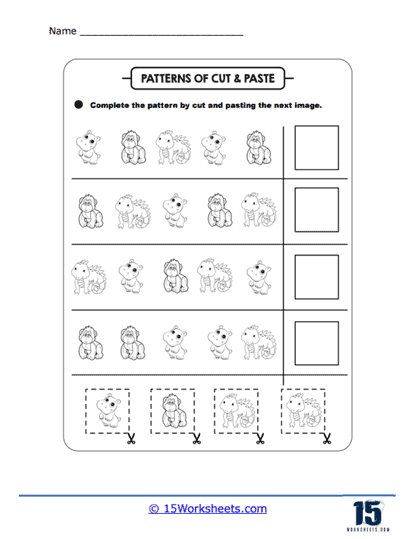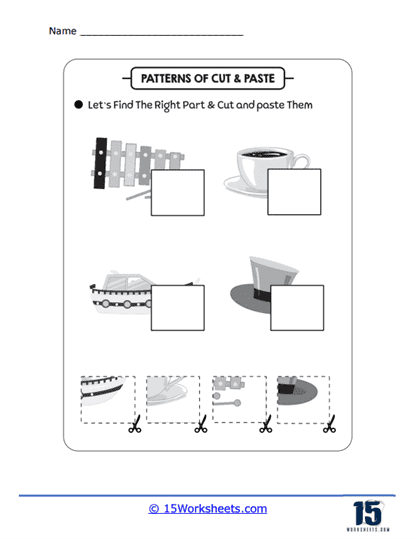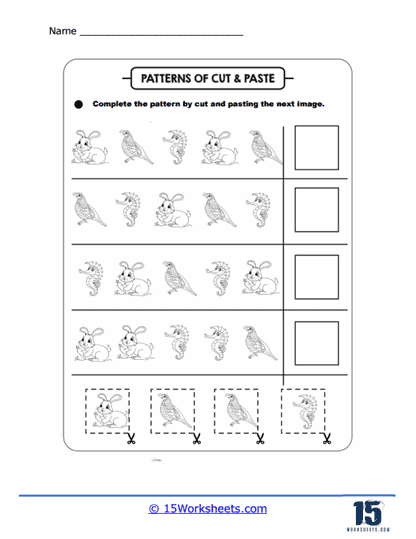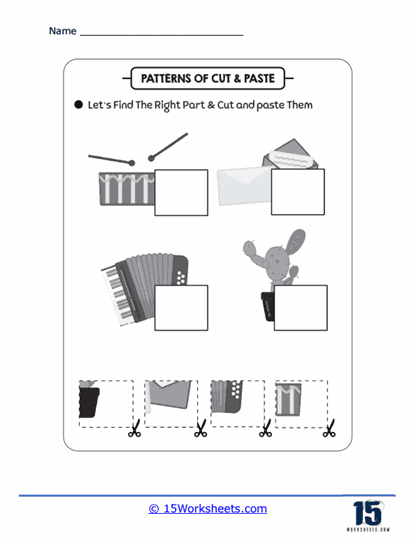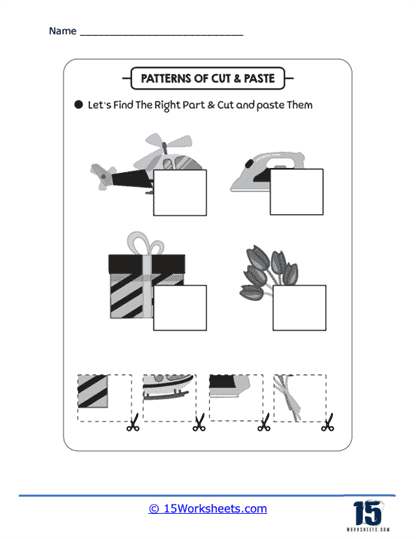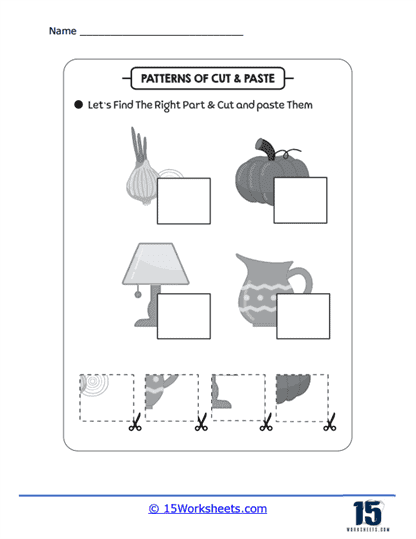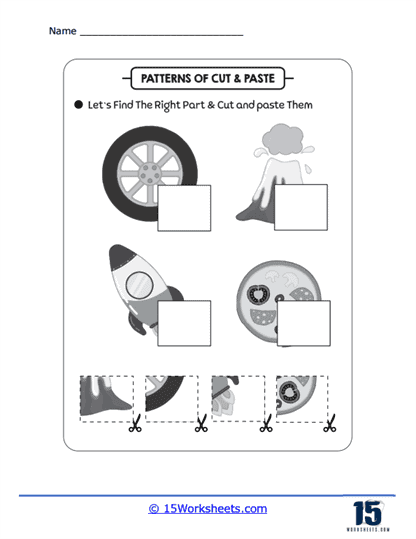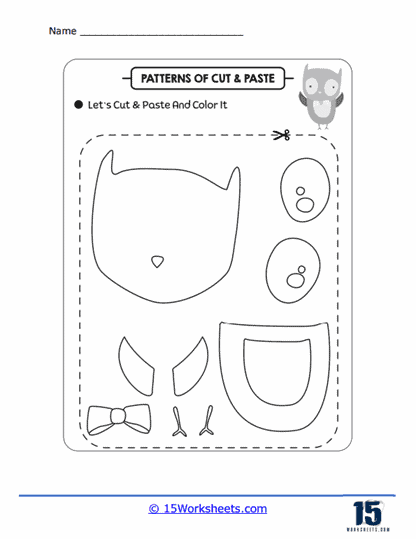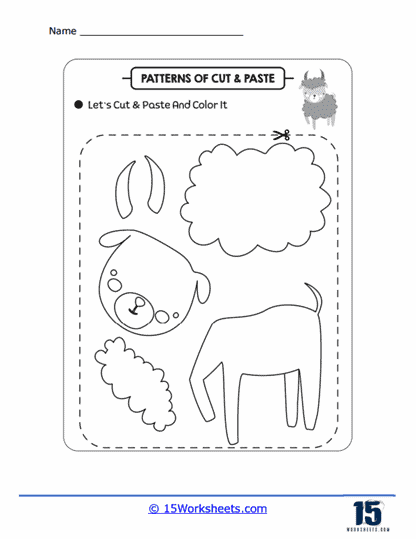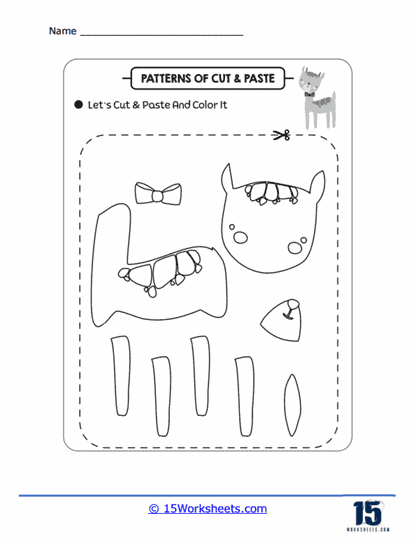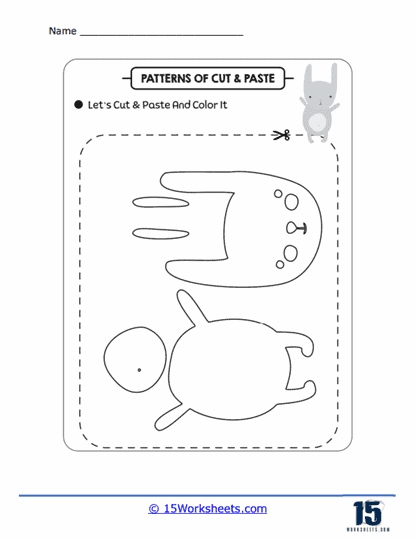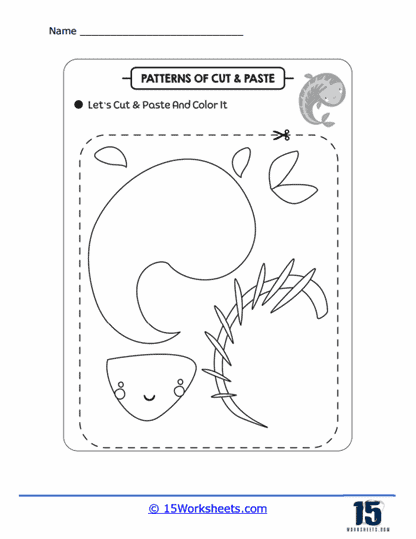Cut and Paste Patterns Worksheets
What Are Cut and Paste Patterns Worksheets?
The objective of these worksheets is to help develop children’s cognitive skills, fine motor skills, pattern recognition, and sequencing skills. Most of the worksheets will involve a sequence of images, shapes, or colors that follow a certain pattern. This pattern could be a simple one, like ‘ABAB’ (apple, banana, apple, banana), or something more complex, like ‘AAB’ (apple, apple, banana) or ‘ABB’ (apple, banana, banana). It could even involve patterns of increasing complexity, like ‘AABBAABB’.
The cut and paste aspect refers to the way children interact with the worksheet. Usually, there will be a series of images at the bottom or on a separate sheet that children need to cut out. Then, they paste these images onto the worksheet in the correct sequence to complete the pattern.
These worksheets are a great tool for children to practice their pattern recognition skills, which is a fundamental concept in mathematics. Plus, the physical act of cutting and pasting can help improve their fine motor skills. These are crucial for tasks that require precision, such as writing or tying shoelaces.
How These Worksheets Help Students
Cut and paste activities offer numerous benefits for children, helping their cognitive and physical development. One significant advantage is the enhancement of fine motor skills, which refers to the coordination of small muscles in the hands and fingers with the eyes. These skills are crucial for a wide range of tasks in daily life such as writing, buttoning clothes, and tying shoelaces.
Additionally, these activities contribute to children’s cognitive development as they involve following a set of instructions, identifying patterns, and recognizing shapes, thereby promoting understanding, thinking, learning, and remembering. Hand-eye coordination, a vital skill in many areas of life including sports, writing, and computer use, is also bolstered through cutting and pasting activities.
These tasks allow children to express their creativity and imagination by creating new items like collages or pictures. They also help develop foundational mathematical skills such as pattern recognition, which aids in recognizing and predicting sequences, thereby laying the groundwork for understanding more complex mathematical concepts in the future.
Moreover, these activities enhance spatial awareness, helping children understand shapes, sizes, and their relative positions. They also require a high level of concentration and patience, promoting the ability to focus on a task for extended periods and complete work meticulously.

